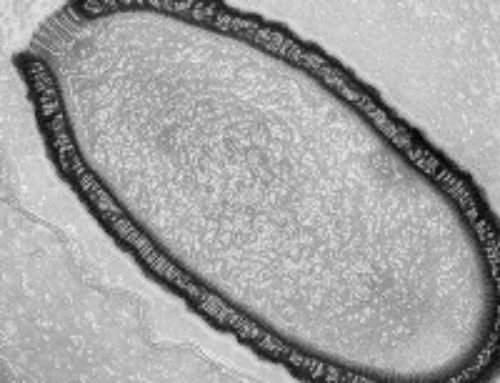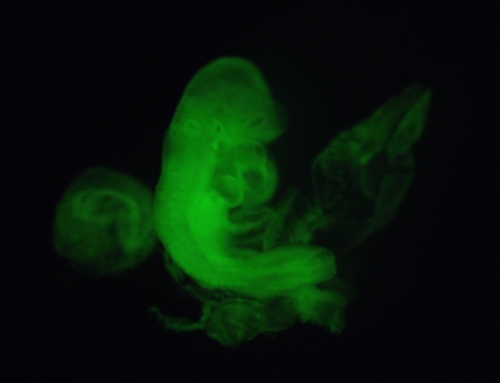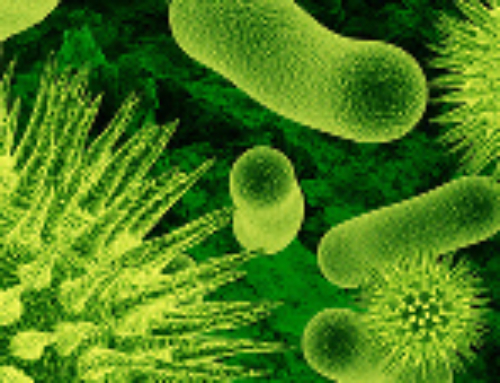‘Go Green!’ has been the mantra of the new decade. Vehicular pollution, industrial wastes, smoke from various sources, insecticides and pesticides used in agriculture and improper municipal waste management are among the major sources of air, water, land and noise pollution.
The World Health Organization’s (WHO) press release of 25th March 2014 reports that 7 million people died in 2012 as a result of air pollution. The report also links many diseases ranging from cardiovascular diseases to cancer as a result of air pollution.1 If industrial wastes are not disposed safely, they contaminate the water bodies and the environment, thus, making it hazardous for life in general. According to the WHO, the types of manufacturing and processing industries mainly guilty for contamination of drinking-water include chemical, metal, textile dying, tannery, paper and pulp, electroplating and printed circuit board manufacturing.2 The use of pesticides and insecticides in agriculture is also contributing its share to harming the land. This leaves us with the question of our sustenance in the coming years. Unless we make a conscious effort to create a revolutionary change, we would end up seeing a very murky future.
The awareness of the hazards of pollution has resulted in both civilians and the industrial sector taking an active effort to reduce its levels. The textile industry has also made some remarkable innovations to meet this goal. Many of these are supported by the ‘LAUNCH’ initiative, which funds solutions for a pollution free environment.3 I detail some of the exciting ones below.
- Tree-Bark Cloth: garments made from barks of trees have been one of the oldest forms of clothing known to mankind. Popularly known as ‘Barkcloth’, the ‘fabric’ is obtained from special species of fig trees called Mutuba (ficus natalensis).4,5 The process of making barkcloth is an ancient craft, practiced by the Baganda people of south Uganda, and dates back to about 600 years. The process is carried out by experienced skillful craftsmen who cut and peel the outer layer of the bark from the tree.6 The exposed area of the trees are then rubbed and covered with banana leaves to preserve its moisture, and protect it from the sun. A new bark then grows in place of the old one. The peeled bark is treated with live flames and boiling water to soften it. Thereafter, the bark is pummeled with specialized wedged mallets a number of times to further soften it. The wedges on the mallet render a special design to the surface of the fabric. The beating process is followed by stretching the barkcloth, which not only increases its size but also reduces its thickness. A bark of 12 inches can be stretched to about 120 inches, i.e. about ten times its original length. The pummeled and stretched barks are then sun dried for about three days, which gives it a deep reddish-brown color. Bark cloth is multilayered, and prone to stretching, tearing, abrasion and peeling. It has a life span of about six to eight years.
The advantages of bark cloth are that it can be organically cultivated with less amount of water, and it boasts of a zero carbon footprint. The trees can be harvested for up to 40 years, yielding up to 200 sq.mt of cloth individually. The cloth comes in different qualities, gauges, textures, sizes and shades (from light brown to dark brown) depending on the type of tree, time of harvest and craftsmanship. UNESCO included Barkcloth making on the Representative List of the Intangible Cultural Heritage of Humanity in 2009 (originally proclaimed in 2005).5 There are a number of organizations that closely work with the local craftsmen to bring commercial products to the market. Vibrant shades and tones of Barkcloth are available today in forms of clothing, house hold textiles, bags and accessories, car interiors, floor coverings and decorative goods, to name a few.
- Flax Fibres: the cellulosic fibre cotton is one of the most popular natural fibres used in clothing due to its comfort properties. The problem that the textile industry faces today is that it may not be able to meet the growing demands of cotton in the future, neither can the man-made fibres provide an equally good alternative to cotton. Moreover, cotton cultivation requires substantial irrigation, and use of pesticides and insecticides, which makes the process less ecofriendly.
In order to solve this issue, CRAiLAR, Canada developed an innovative process to extract flax fibres from the stalk of the plant.7 Flax (genus linum) is a lingo-cellulosic fibre, which is soft and lustrous, but less flexible and elastic than cotton. The lignin component in the fibre, is responsible for its lack of flexibility and elasticity. CRAiLAR’s proprietary method helps to remove the stiffening lignin from the retted stalks, thus making the fibres more flexible. The process is said to give flax fibres softness and durability, which is comparable to cotton. Like cotton, the flax produced from this process also has good tensile strength and absorbency capacity, but on the other hand it dries quickly and shrinks less. These flax fibres can be knitted like cotton, and the company claims that materials produced by their flax and its blends tend to outperform pure cotton materials.
From the environmental perspective, CRAiLAR’s specialized production method produces 1 kg of flax requiring 99% less water than that required for producing 1kg of cotton. They have developed agronomical practices to grow the flax crop in winter as well, since it requires no irrigation, minimal pesticides and herbicides, and delivers an average of 2.5 times the fibre yield per acre over conventional cotton. Thus, CRAiLAR’s flax is made to be competitive in cost and performance to cotton.
- Fibres from Milk Proteins: this sounds very strange, but cloth made from the milk protein casein has existed for many years now. It was first developed during World War 1 in Germany, and then advanced during the 1930s in America and Italy.8 Today, casein fibres are produced by many companies worldwide. The manufacturing process of this fibre begins with purifying casein from liquefied skimmed milk.9 The purified casein, in the form of a spinning solution, is then extruded through a spinneret into an acid bath, thus solidifying the fibres. The fibres are stretched to give it its stability before they are crimped and cut into fibres. Milk fibre has excellent antimicrobial, antibacterial, non-allergenic and flame resistant properties. The fibre combines the qualities of both natural and synthetic fibres in it: it has good moisture absorbency properties like that of natural fibres and better moisture conduction than synthetics. This makes clothing made from milk fibres both permeable and comfortable.
Why is casein fibre of environmental importance, and what’s new if it has been produced for so many years? The Independent, UK reported that 360,000 tonnes of milk is wasted each year in Britain alone.10 This creates greenhouse gases equivalent to 100,000 tonnes of carbon dioxide- comparable to emission by 20,000 cars. These figures are for Britan alone. Can we imagine what the numbers would look like for the whole world together? Instead, if this wasted milk could be used to make fibre, it would not only be useful, but also save the environment. German entrepreneur Anke Domaske developed a new method for producing milk fibres without the use of any chemicals.11 She established her company Qmilch GmbH in 2011, where 100% bio-degradable milk fibres are produced. By her method, 1kg of fibre can be produced in just 5 min, requiring only 2 liters of water. The process is waste free, chemical free and involves minimum carbon dioxide emission. The fabrics made from these fibres have a comfortable silky feel, excellent heat and moisture management properties, and due to their antibacterial properties, they can be used by people who suffer from textile allergies. Qmilch fibres can be blended with other fibres, and just 20% of their addition in blends are said to improve the wear, fit and comfort of conventional fibre fabrics. Currently, Qmilch fibres are being used in automotive applications, due to their resistance to fuels, their antimicrobial properties make them suitable for home textiles and medical textiles, while their comfort and breathable properties make them conducive for clothing purposes.
- Artificial honeybee silk: honeybee larvae produce silk like fibres which help to reinforce the wax cells in which they pupate. It provides thermal and mechanical stability to the hive. There is a growing interest in honeybee silk for application in medical textiles. Dr. Tara Sutherland and her group at Australia’s Commonwealth Scientific and Industrial Research Organization (CSIRO) have been doing extensive research on the structure and application of honey bee silk.12 According to Dr. Sutherland, the structure of the silk consists of coiled coils, where multiple helices are wound around each other. This makes the silk tough, light weight and highly flexible. Its unique structure makes it ideal for use in sponges, transparent films, biomimetic fibres and nano-fibres. It can also be knitted and woven just like other textile fibres. It is possible to generate the recombinant silk protein at high quality and quantity specifications, thus making it suitable for scaffolds in regenerative medicine, and potential applications such as for encapsulating and stabilizing vaccines. The molecular structure of the protein means that its full-length form can be synthesized at unprecedented levels in recombinant systems. These properties of the protein make it very versatile in its fabric forms, where it possesses the ability to encode information within itself- a property suitable for application in aerospace and health industries. Depending on the information encoded, the fabric has an ability to ‘think’ for itself, and react to its environment. Dr. Sutherland’s work has been applied to medical textiles in the form of current generation materials like wound dressings, which can entrap antimicrobial and growth factors. The next generation materials proposed by the Sutherland group are wound dressings that dissolve in the body after a week or after the wounds heal. This would eliminate the need of another visit to the doctor, and also disposing off the dressing material. Research is being currently undertaken to develop future generation materials where wound dressings can sense and respond to the state of the wound, which will be a remarkable innovation for the medical field.
- GeckskinTM: Geckskin is a fabric-based adhesive fabricated by Dr. Al Crosby and Dr. Duncan Irschick from the University of Massachusetts, Amherst.13,14in does not leave any marks or sticky residues. Geckskin, as the name implies, is inspired by the tiny hair like structures (setae) of the gecko foot. It not only mimics the setae, but also incorporates the internal anatomy of the gecko’s tendons, which go from bone into skin, thus forming a very strong bond. Geckskin is based on the concept known as draping adhesion. According to the inventors, ‘Draping adhesion is created with materials that can drape to produce conformal contact with a surface, while still maintaining high, elastic stiffness in directions where forces will be applied. This design enables adhesive loads to be more evenly distributed across the pad surface, while also allowing for a rapid and low-energy transition between attachment and detachment. The key innovation of Geckskin is the integration of a soft elastomer (the pad) with a stiff fabric (the skin), allowing the pad to drape over a surface to maximize contact. Further, as in natural gecko feet, the skin is woven into a synthetic tendon, yielding a design that plays a key role in maintaining stiffness and rotational freedom. The end result is an adhesive device that is powerful, easily removed, and leaves no residue.’ Geckskin is made from commercially available materials like polydimethylsiloxane (PDMS) or polyurethane, which forms the soft elastomeric part along with carbon fibres or Kevlar, which forms the stiff component. Geckskin has an impressive load bearing capacity of almost 300 pounds when adhered to glass, and up to 700 pounds against a wall. Geckskin can be used 1000s of times and, hence need not be disposed of after just few uses.
- Biofabrics: biofabrics is an innovative way of making cotton-like fabrics from yeast and bacteria.15,16 The concept designed by Biocouture, UK involves introducing a culture of yeast and bacteria to a green tea solution and leaving it for fermentation. The fermentation process causes the bacteria to produce a sheet of cellulose on the surface of the liquid. Thus, a cotton-like fabric can be produced without the use of pesticides. These cellulose fabrics are being used to make jackets and kimonos. Biocouture is also involved with various scientists who come together to bring several eco-friendly products. Another such study demonstrates the use of algae that produce different pigments which can be used for dyeing textiles.
- Polyester from plastic: plastic bottles and their kind present an environmental hazard due to their lack of biodegradability. Presently, plastics are burnt or disposed in landfills, which creates unhealthy environmental conditions. Moreover, recycling plastics is not only an exhaustive process, but also utilizes a lot of energy. Ambercycle, USA, devised a novel method to dispose of plastics, and in the process, produce raw materials for textile production.17,18 Ambercycle takes the help of systems biology to engineer custom-tailored organisms that can be used to degrade plastics into its chemical components. With the help of this process plastic bottles can be degraded into Terephthalic Acid (PTA), a major raw material used in making polyester. This is not only cost effective, but also has a zero carbon foot print.
The growing awareness of environmental hazards has surely kindled a flame of innovations aimed at saving our planet. It is amazing to see how a single cause can bring different disciplines together, each of them contributing their knowledge and specialization to create a greener tomorrow. If each one of us, as civilians or scientists, can do our bit to conserve our environment, our planet will be a greener place to live in. It is time to make our choice!
References:
- http://www.who.int/mediacentre/news/releases/2014/air-pollution/en/
- http://www.who.int/water_sanitation_health/dwq/cmp130704chap7.pdf?ua=1
- http://www.launch.org/
- http://www.mutuba.net/about.html
- http://www.unesco.org/culture/intangible-heritage/40afr_uk.htm
- http://www.youtube.com/watch?v=lNWUNujuSqQ
- http://www.crailar.com/revolution
- http://en.wikipedia.org/wiki/Textile
- http://www.swicofil.com/products/212milk_fiber_casein.html
- http://www.independent.co.uk/life-style/food-and-drink/news/drink-your-milk-waste-is-equal-to-gas-emissions-from-20000-cars-7743521.html
- http://de.qmilk.eu/presite/index_en.html
- http://www.launch.org/innovators/tara-sutherland
- http://radioboston.wbur.org/2013/11/29/umass-geckskin-redux
- http://geckskin.umass.edu/
- http://biocouture.co.uk/about/
- http://www.launch.org/innovators/suzanne-lee
- http://www.launch.org/innovators/akshay-sethi
- https://www.youtube.com/watch?v=YFmyTGo7eiU




